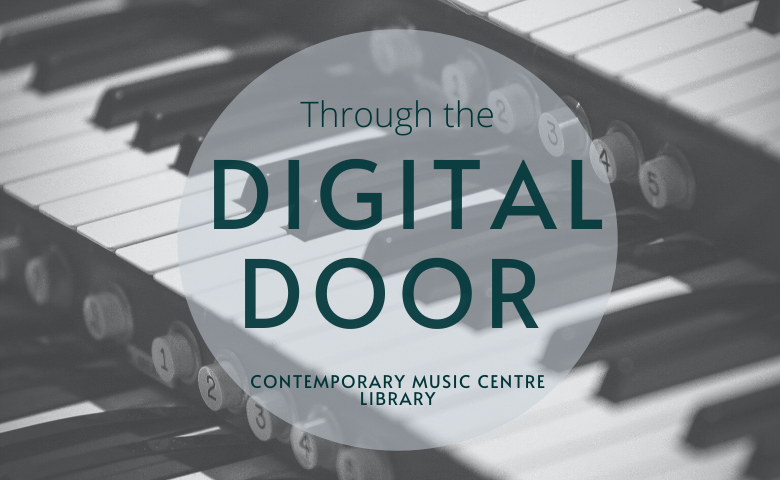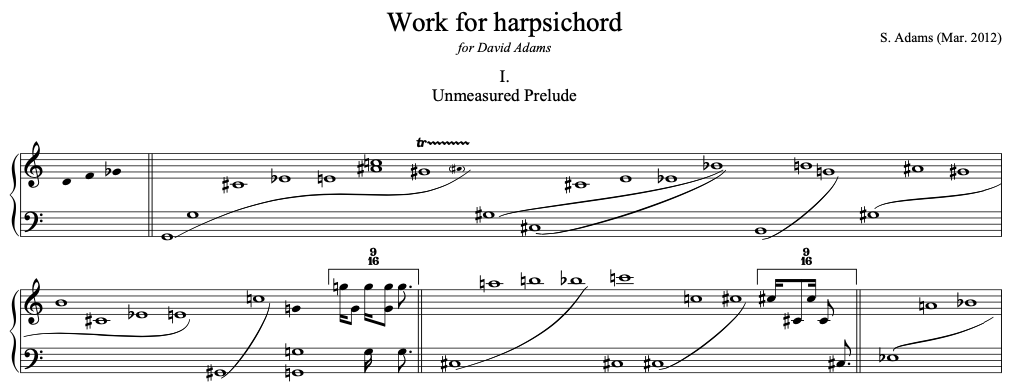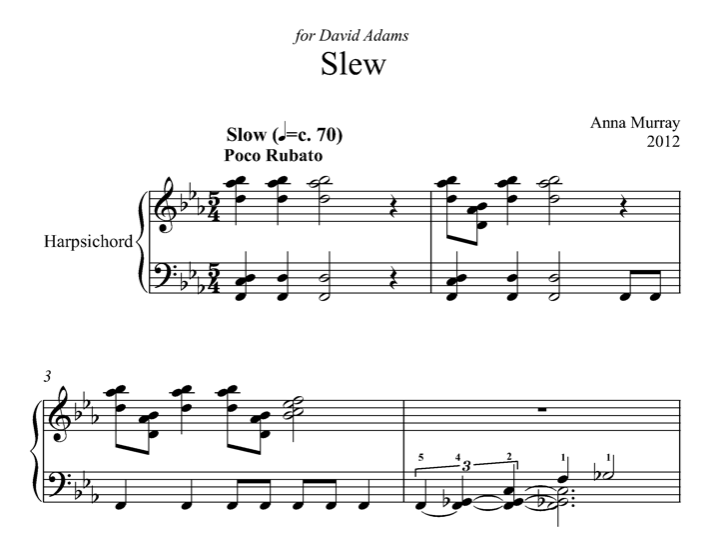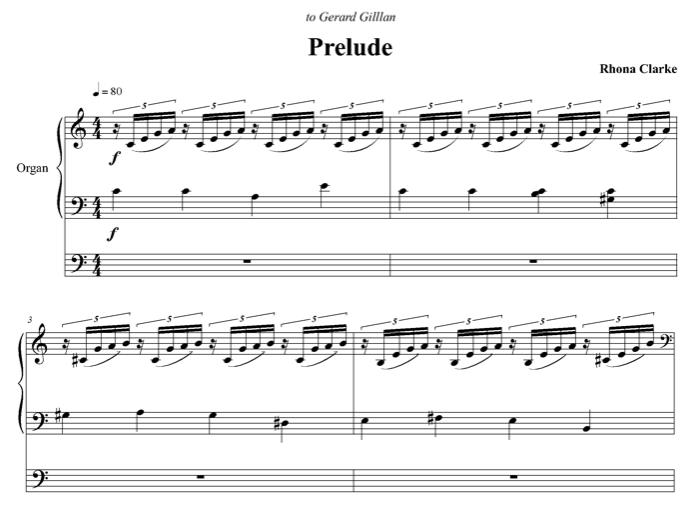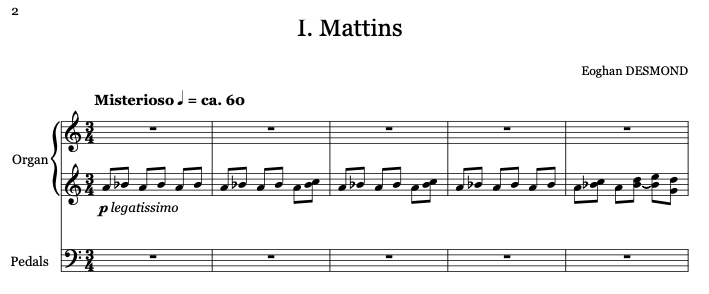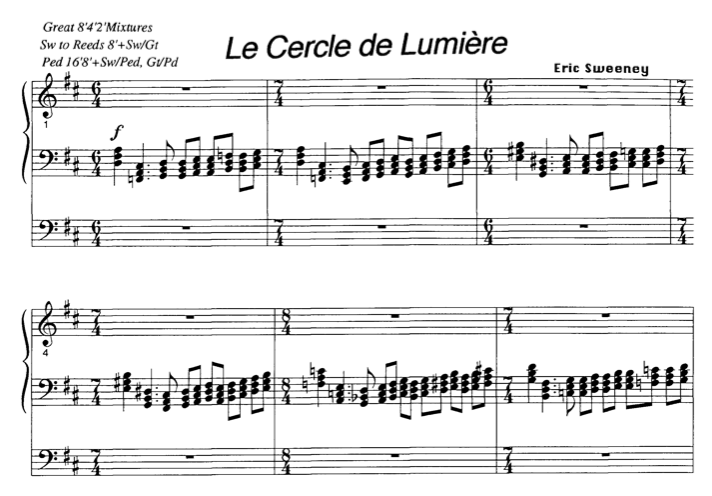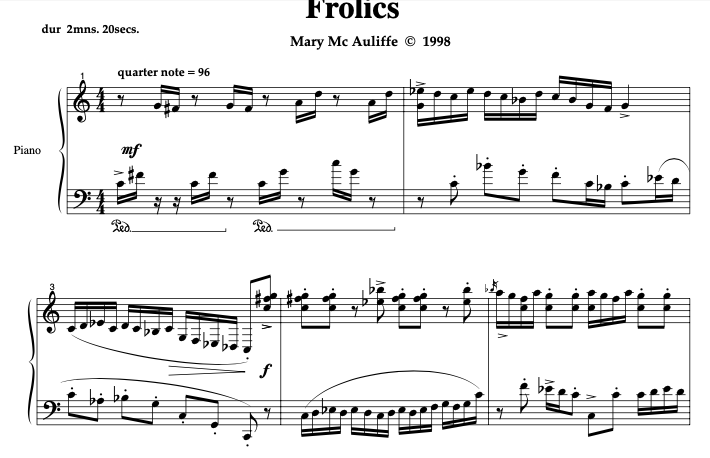Through the Digital Door: works for harpsichord and organ
This week's Through The Digital Door looks at works in the CMC catalogue written for harpsichord and organ. Many of these works can also be performed on piano. The works were written across a span of thirty years and represent a fraction of the broad range available through the CMC Catalogue.
Sebastian Adams: Work for harpsichord (2012) 10'
This work was premiered by David Adams at Kaleidoscope Nights in Bello Bar, Dublin in June 2016. The work is made up of two movements:, Unmeasured Prelude and Toccata.
Anna Murray: Slew (2012) 7'
This work, written for harpsichord, was premiered by David Adams in the National Concert Hall in 2012. A version for piano is also available.
Gerald Barry: Sur les Pointes (1981) 13'
This work was first written for piano. The composer's programme note also says that the first section can be performed on organ or harpsichord.
*Sur les pointes* is a balletic term meaning the raising of the body on the tips of the toes. As *Au Milieu* was an exploration of line, so is *Sur les Pointes* of harmony. The melody harmonised comes from ‘ø’ an entirely monodic piano duet from 1979. The opening section should be played as if the keyboard were red hot and can only be touched long enough for the harmonies to sound. The piece is an etude in staccato, legato and octave playing, in silence and the relishing of harmony.
This work is published by Schott.
Rhona Clarke: Prelude (2010 rev. 2012) 5'
This work for organ was first performed by Gerard Gillen at St. Michael's Church in Dun Laoghaire in September 2011.
This is a short, lively piece harking back to an early 20th Century French style. There are definite, even insistent, melodic lines throughout with a recurring five-note figuration reminiscent of piano music of the romantic era, but given an up-to-date twist. The piece is dedicated to Gerard Gillen.
John Buckley: And wake the purple year (1985) 10'
And wake the purple year was written for either harpsichord or piano, and was commissioned by Newpark Music Centre. The work was first premiered on harpsichord by Paula Best in Newpark Music Centre. The piano version was prepared in 1986.
The title is taken from a line in Thomas Gray's *Ode to Spring*, and it reflects the optimistic, springlike character of the piece; the original version for harpsichord being completed in early spring 1985. The idiom of *And wake the purple year* is traditional, and draws its inspiration from Bartok and Debussy rather than from more recent developments. The theme heard at the outset, along with its tremolo left hand accompaniment, provides all the material for the development of the piece.
Eoghan Desmond: 4 Simple Chorale Preludes on 'King Jesus Hath a Garden' (2016) 8'
Written for organ, this work was premiered in Queen's College, Oxford by Tim Parsons in 2016. Its four movements are "Mattins; Lauds; Vespers and Compline.
Each movement evokes the prayerful monotony of these monastic rites: Mattins, being the last office before dawn, is somewhat still and misty, with the chorale tune modified to bring to mind the beginnings of bird-song. The jaunty ostinato of Lauds is symbolic of cock-crow, as that office takes place during early dawn. The chorale here is steady and sure, juxtaposing the steady, sure monastic life with the vibrant tumult of the outside world. Vespers is the most prayerful movement, relaxed, and moving in and out of conventional harmonic language, before drowsy Compline closes out the set.
Eric Sweeney: Le Cercle de Lumiere (1999) 8'
Written for organ, this work was commissioned and premiered by Peter Sweeney in St Michael's Church, Dún Laoghaire in July 2000.
I began this piece while holidaying in France in the summer of 1999 and finished it during the time of the solar eclipse some weeks later when the lasting visual image of that day to me was of a 'circle of light' around the eclipse. In addition to that visual picture the music describes a constantly repeating circle of chords, rather in the manner of a ground bass, and is again written in the 'bright' key of D major.
Mary McAuliffe Frolics (1998) 2'
This short work was written for either the piano or harpsichord. It is written for children at a Grade 5 or Grade 6 standard.
Joseph Groocock: Trio Sonata in C (1986) 7'
Written for organ, this work was premiered by the composer in Trinity College Chapel in 1986. It was recorded in 1999 by David Adams on a CD Organ: The Historic Organs of Trinity College Dublin. Groocock studied the works of Bach throughout his career, and Bach's influence is seen in this work. The programme note explains in more detail:
The first and third movements of this sonata are frankly modelled on certain contrapuntal devices found in the famous six by Bach, notably the interchange of melodic lines. The slow movement is unusual, being founded on a single melodic line, which provides material for left-hand, right-hand and pedals, but simultaneously at three different speeds.

